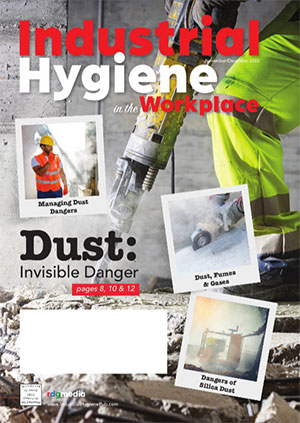Guidance on How to Safely Work with and Store Hazardous Materials
Lisa Neuberger, Editor, J. J. Keller & Associates

It is important to be aware of OSHA safety regulations, in order to protect workers and the facility against harmful explosions and burns. (photo courtesy: J.J Keller & Associates)
Look around your workplace, and chances are you’ll find flammable and combustible materials. Examples include paints, aerosols, solvents, cleaners, oils…just to name a few. Anyone working with such substances or chemicals needs training on how to safely work with and store them, including how to protect against hazards.
But, even with training, questions come up. Here are a few of the most common questions, along with answers based on regulations and best practices.
Question: Can flammable liquids be stored in plastic containers?
Answer: Flammable and combustible liquids must be stored in “approved” containers. This includes:
- Department of Transportation-approved shipping containers, or
- Containers that are listed and labeled with an approval from a nationally recognized testing laboratory (NRTL).
That said, any plastic containers used for flammable liquids must be approved by the DOT or an NRTL.
Q: What about portable gas cans in the workplace?
A: OSHA generally expects all flammable liquids to be stored in a flammable storage cabinet, inside a storage room or flammable storage warehouse. You are allowed to have enough flammable liquid for a single shift or a day of work outside the protected storage.
However, there is an exemption for incidental storage. OSHA allows you to store up to 25 gallons of Category 1 and 120 gallons of Categories 2, 3 and 4 in containers and any one “fire area” of the facility, outside of the flammable cabinet or storage room.
Q: Can flammable liquids and corrosive chemicals be kept in the same storage cabinet?
A: First, check the Safety Data Sheets (SDS) for the chemicals’ specific storage requirements. The SDS will identify incompatible materials that should not be stored together. Then, if the chemicals are not incompatible, make sure the chemicals are being stored:
- According to the manufacturer’s directions,
- In approved containers, and
- Inside an approved storage cabinet.
Q: What is the distance a flammable storage container can be from an exit door?
A: There’s no rule giving a specific distance that flammables must be stored from an exit door. However, OSHA does have a rule stating that:
- Flammable liquids must not be stored where they limit the use of the exit; and
- When using exits, employees must not have to travel toward a high hazard area.
Q: Does OSHA have a rule about storing and disposing oily rags?
A: Yes. OSHA says that oily rags (sometimes called industrial wipes, wipers, shop rags, etc.) and other combustible waste materials in a building or operating area must be:
- Kept to a minimum,
- Stored in closed metal waste cans, and
- Disposed of daily.
Oily or solvent-soaked rags can easily start a fire through spontaneous combustion. Prevent this by using specially designed oily waste cans for temporary storage. These cans have spring-loaded lids and raised bottoms with vent holes to dispense heat.
Remove flammable liquids from the rags before placing them in the temporary containers. Drain cans and liquid disposal cans offer the greatest degree of safety at your workstation.
Lisa Neuberger is an Editor at J. J. Keller & Associates, a nationally recognized compliance resource company that offers products and services to address the range of responsibilities held by business professionals. Neuberger specializes in workplace safety and environmental topics such as hazardous waste management; injury and illness recordkeeping and reporting; and sanitation. She is the Author of J. J. Keller’s Environmental Compliance Manual, Environmental Alert newsletter and HazSafety Training newsletter. She is also a Speaker at webcasts and other educational events.
For more information, visit www.jjkeller.com/osha and www.jjkellerlibrary.com. PSN




